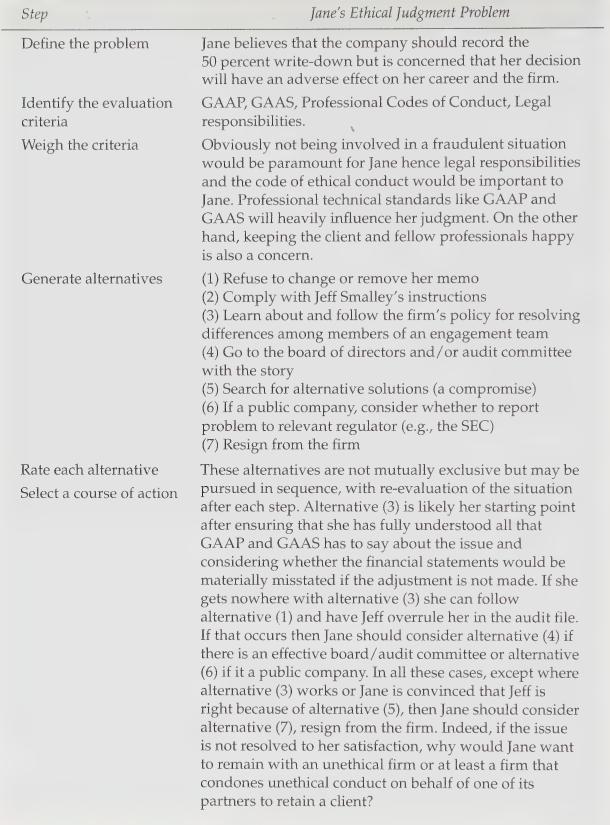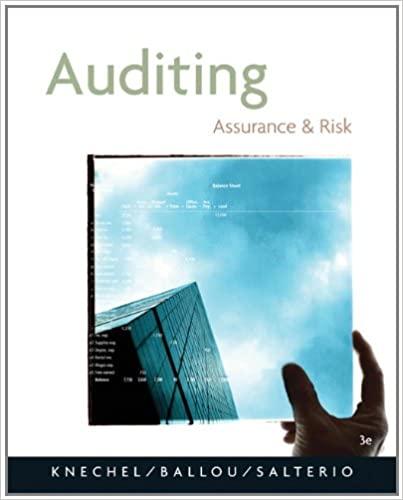Audit decisions sometimes come down to a trade-off between satisfying one set of stakeholders at the expense
Question:
Audit decisions sometimes come down to a trade-off between satisfying one set of stakeholders at the expense of others. In the example in Figure 17-4 and 17-5, an auditor is forced to choose between making her superiors and the client happy or doing what she feels is appropriate to the goal of an audit: to attest to the fairness of management's assertions.
Consider each of the following brief situations:
a. An auditor discovers a small employee fraud involving theft of power tools in the service department of a TV/VCR repair operation.
b. An audit manager knows that client management expects all auditors assigned to their engagement to be CPAs, but because of short staffing the manager is considering assigning to the engagement a new hire who has not passed the CPA exam.
c. An auditor discovers that one of his friends and co-workers on an engagement has been using the client's equipment for personal business (i.e., long-distance telephone calls, photocopying).
d. While reviewing the workpapers of an audit on which he worked several years ago, a senior auditor discovers several procedures had been recorded as completed, although he knows they were not. The person who completed the workpapers is now his superior.
e. An auditor knows for a fact that a friend of hers who works for another firm and who represents himself as a CPA has not completed the appropriate mandated continuing education for his CPA certification.
f. The senior partner in charge of an audit engagement is told that his firm will be fired from the audit if he goes forward with his plan to give the company a qualified audit report.
g. An audit manager discovers that controls over the payables process of her client are poor and cannot be relied on. In fact, the controls have been that way for several years, but the manager approved them in years past based on inadequate tests of controls.
h. A junior member of an audit firm discovers that a senior partner in the firm has been adding billable hours to the client bills in an attempt to boost revenue.
For each of the preceding situations,
(1) identify the major stakeholders (besides the individual making the decision),
(2) identify and discuss the alternatives the subject faces, paying special attention to the ethics involved in the decision,
(3) choose and defend a course of action.
Figure 17-4

Figure 17-5

Step by Step Answer:

Auditing Assurance And Risk
ISBN: 9780324313185
3rd Edition
Authors: W. Robert Knechel, Steve Salterio, Brian Ballou





